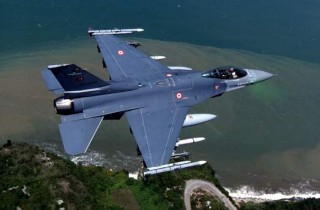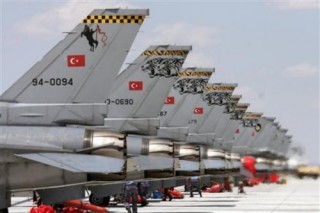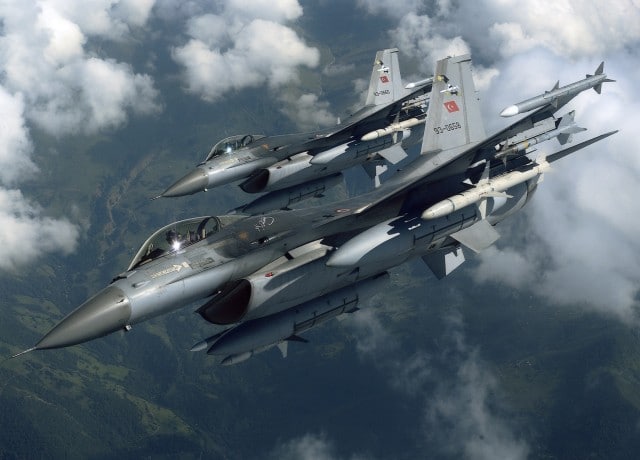New Code Allows Turkey to Use Turkish Made Weapons and Equipment

The U.S. has agreed to supply Turkey with source code for F-16 fire control and flight system software, so that Turkey can modify F-16 software to use Turkish made weapons and equipment.
This will be part of a Turkish refurbishment of 213 of their F-16s.
This will cost about $5.2 million per aircraft, and include a lot of Turkish made equipment. Over the last decade, Turkey has been producing more military gear locally, and now produces over half its military equipment needs.
But most major items of equipment are still obtained from foreign suppliers. For example, four years ago, Turkey bought another 30 F-16C Block 50 fighters, for over $60 million each. This will give Turkey one of the largest F-16s fleets (nearly 250) in the world. These new F-16s are beginning to arrive.
[Editors Note: This move keeps Turkey’s F-16’s in parity with recent Israeli upgrades while supporting the building of Turkish weapons industry, similar to what we did for Israel. Turkey is a vastly more important military ally than Israel, which is of no strategic importance whatsoever. Israeli Lobby political corruption has manufactured its own ally status to loot the American taxpayer, which subsequently supported Israeli funding to develop it’s huge WMD program, the major cause of our Mid East problems
Someone might want to explain the benefits to U.S. High Tech arms industry workers. But the rationale may be to keep the competitive edge on the flying platforms while letting local users produce their ordinance. This upgrade is also a public thank you for Turkey’s placement of the NATO radar system this year… Jim W. Dean]

Like Israel, Turkey is upgrading its older F-16s. There are actually six major models of the F-16 currently in use, and identified by block number (32, 40, 42, 50, 52, 60), plus the Israeli F-16I, which is a major modification of the Block 52.
Another special version (the Block 60), for the UAE (United Arab Emirates) is called the F-16E.
The various block mods included a large variety of new components (five engines, four sets of avionics, five generations of electronic warfare gear, five radars and many other mechanical, software, cockpit and electrical mods.)
Countries like Turkey can thus add the new components and turn an older F-16 into a more powerful model.
There are also some older (Block 1, 5, 15, 20, 25, 30) aircraft out there, all with two decade old technology. The Turkish upgrade program seeks countries with these older models, and offers competitive prices for upgrades.
With the use of Turkish made components, the newly upgraded Turkish F-16s will be unique (like the Israeli F-16I and the UAE F-16E).
Turkey is also becoming a bigger player in the upgrade market. For example, Pakistan is having a Turkish firm to upgrade elderly Pakistani F-16s from Block 15 configuration to Block 40. Now that the U.S. has lifted its arms embargo on Pakistan, there are many firms competing for all the work needed to update older American weapons still used by Pakistan.
The Turks have long had good trade relations with Pakistan, and have also developed, with the help of the U.S. and Israel, a capable aircraft maintenance and upgrade industry. Most of the F-16 work will be done in Pakistan, using Turkish engineers and technicians supervising some local workers, and using largely imported (from Turkey and elsewhere) components.
The F-16 is the most numerous post-Cold War jet fighter, with over 4,200 built, and more in production. There are 24 nations using the F-16, and 14 have ordered more, in addition to their initial order. During The Cold War, Russia built over 10,000 MiG-21s, and the U.S over 5,000 F-4s, but since then warplane production has plummeted about 90 percent.
But since the end of the Cold War, the F-16 has been popular enough to keep the production lines going, despite the fact that the F-35 is supposed to replace the F-16.
But the F-35 price keeps going up (it’s headed north of $100 million per aircraft), and the F-16 continues to get the job done at half that price.
Source: Strateypage.com
ATTENTION READERS
We See The World From All Sides and Want YOU To Be Fully InformedIn fact, intentional disinformation is a disgraceful scourge in media today. So to assuage any possible errant incorrect information posted herein, we strongly encourage you to seek corroboration from other non-VT sources before forming an educated opinion.
About VT - Policies & Disclosures - Comment Policy




